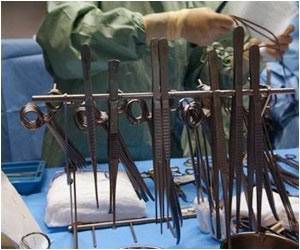In a much-awaited move, the first comprehensive ESC Guidelines on aortic diseases have been published.

The "2014 ESC Guidelines on the diagnosis and treatment of aortic diseases" are published today online in European Heart Journal (1) and on the ESC Website.
Professor Erbel said: "Previous ESC recommendations were published in 2001 but they were restricted to the diagnosis and management of aortic dissection. The current document also covers aneurysms, calcifications, congenital diseases leading to aneurysms, aortic inflammation (aortitis) and aortic tumors. In addition, the 2001 paper focused on diseases in the thoracic aorta but now we also include diseases in the abdominal aorta."
He added: "In the last 13 years considerable progress has been made in imaging with computed tomography (CT) and magnetic resonance imaging (MRI) and we can examine the aorta in much more detail. We now have software which provides 3D reconstructions and enables us to look at the total structure of the aorta. Taken together, these advances have improved the evidence base for the diagnosis and treatment of the entire aorta."
The guidelines provide the first flow chart to aid decision making in acute aortic syndrome. In the emergency room, a medical history, clinical examination and electrocardiogram (ECG) are used to determine whether the patient is stable or unstable. This decision differentiates the further diagnostic and treatment steps to be used.
Professor Erbel said: "This is a parallel situation to chest pain units for the diagnosis of acute coronary syndromes (ACS), which include myocardial infarction, unstable angina and sudden cardiac death. Acute aortic syndrome is a very severe disease of the aorta and an urgent situation. Similar to ACS, we need to make sure that we do not miss the diagnosis but also that we do not over diagnose. Our strategy should improve the accuracy of diagnosis in the emergency room and ensure that patients get appropriate treatment quickly."
Advertisement
New hybrid treatments have emerged in the last decade with cardiologists and surgeons working together. Surgery has been combined with percutaneous catheter based interventions and implantation of aortic graft stents. The guidelines recommend when to use these hybrid approaches such as the 'frozen elephant trunk' in which a graft stent from the heart goes to the descending aorta and is fixed in the aorta with a stent.
Advertisement
The guidelines recommend that aortic teams be established in hospitals, particularly for acute aortic syndromes. These include cardiology, radiology, cardiac and vascular surgery, paediatric cardiology, and genetics. Professor Erbel said: "The concept is similar to the heart team because aortic diseases require a multidisciplinary approach for deciding the best way forward for each individual patient. Some centres in Europe have already shown that aortic teams are a success but they need to be rolled out more widely."
He added: "Aortic diseases are to a great extent a disease of the elderly and are becoming more common as the population ages. We now have better diagnostic and therapeutic capabilities and the guidelines provide a comprehensive overview of best practice with clear recommendations on all diseases of the aorta."
Professor Erbel concluded: "Diseases of the aorta are usually an emergency situation with a high mortality rate and there is a limited time window to restore blood flow and save organs and limbs. We hope that the flow chart for acute aortic syndrome will lead to earlier diagnosis and rapid treatment with improved patient outcomes."
Source-Eurekalert









